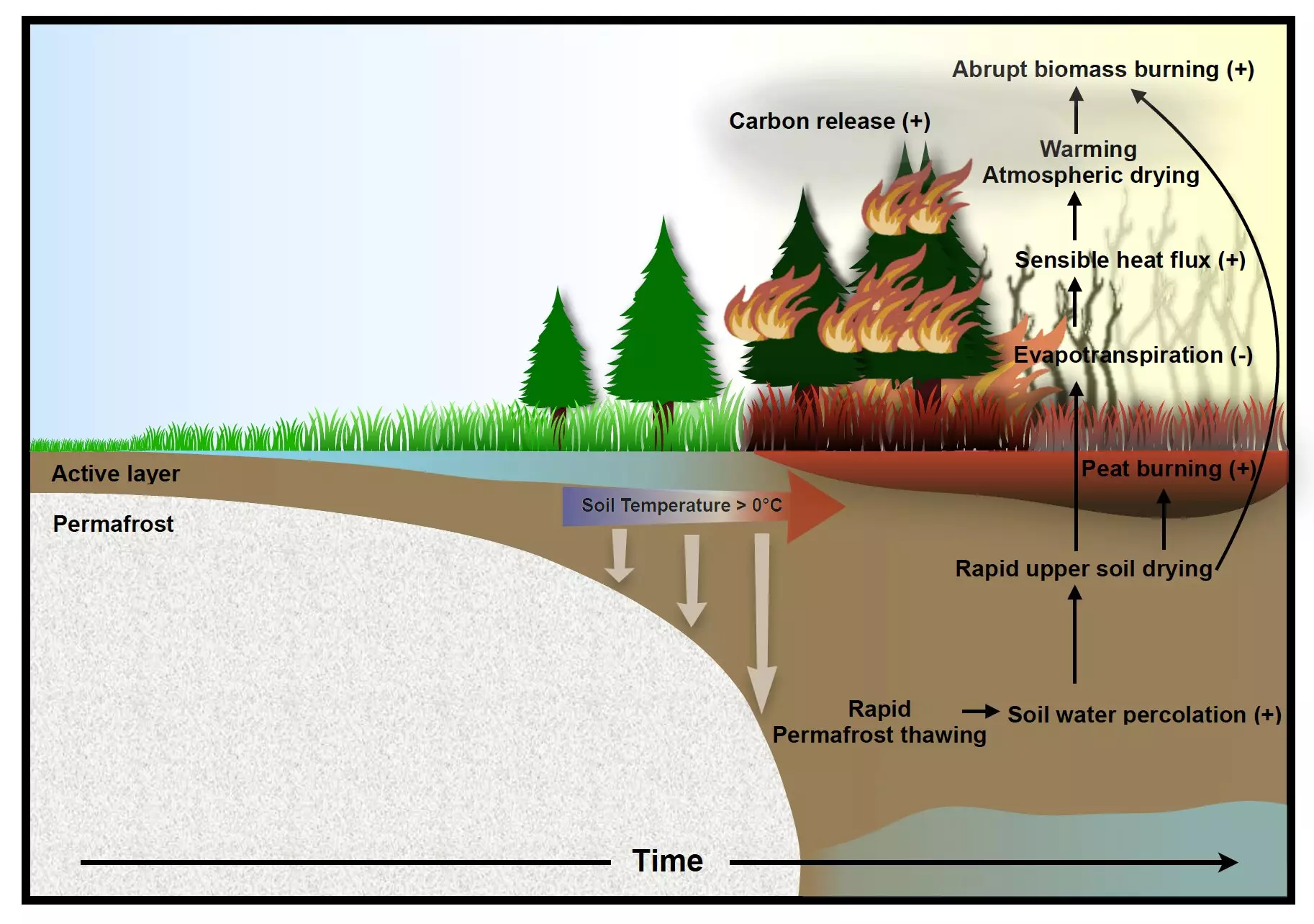Recent scientific investigations into climate change have illuminated a concerning nexus between global warming, permafrost dynamics, and wildfire activity, particularly in the Arctic and Subarctic regions. A groundbreaking study published in the journal Nature Communications highlights how emerging climate models forecast an escalation in permafrost thawing, which is, in turn, expected to precipitate a surge in wildfires across northern Canada and Siberia. This complex interplay reflects an urgent need for advanced modeling approaches that incorporate various climatic factors for a comprehensive understanding of this evolving crisis.
The Relationship Between Permafrost and Wildfires
Permafrost, the permanently frozen ground that characterizes vast areas of the Arctic, acts as a critical reservoir of soil moisture. With its thawing due to rising global temperatures, the implications for wildfire activity are profound. The study underscores that as permafrost thaws, it alters the moisture content of the soil, a determinant factor for fire ignition and intensity. When previous climate models failed to adequately account for this relationship, the urgency of this study grew palpable, especially as the observations point to a correlation between recent warm, dry conditions and intensified wildfires in Arctic locales.
Utilizing the Community Earth System Model, scientists engaged in the study employed an unprecedented modeling framework that integrates permafrost, soil moisture, and wildfire incidence. This approach, which encompassed an ensemble of simulations from the years 1850 to 2100, provides an invaluable perspective on the anthropogenic impacts on climate—particularly greenhouse gas emissions—versus natural climatic variations. Conducted by teams at the IBS Center for Climate Physics and the National Center for Atmospheric Research, this research stands as a pivotal contribution to understanding future climate scenarios.
The findings indicate that by the mid to late 21st century, extensive anthropogenic permafrost thawing will lead to significant ecological changes. As excess soil water is drained promptly, a rapid decrease in soil moisture is anticipated, likely resulting in surface warming and drying of the atmosphere. “These conditions will intensify wildfires,” noted Dr. In-Won Kim, the study’s lead author. The simulation outcomes suggest that this transformation could occur quite suddenly: from minimal wildfire activity to exceptionally intense blazes within a few short years, demonstrating how fragile Arctic ecosystems could face abrupt shifts.
Compounding the challenges of wildfire management is the predicted growth in vegetation biomass due to increasing levels of atmospheric carbon dioxide. This phenomenon, referred to as the CO2 fertilization effect, will provide an additional fuel source for wildfires. The cyclic dynamics of carbon release from wildfires—releasing carbon dioxide and black carbon—further complicate the climate landscape by contributing to additional warming and hastening permafrost thawing. As articulated by Prof. Axel Timmermann, the interconnectedness of fire emissions and atmospheric processes necessitates further integration into climate models.
Towards a Comprehensive Understanding and Future Directions
To enhance predictive accuracy regarding the degradation of permafrost landscapes and associated wildfire risks, researchers advocate for improvements in models depicting small-scale hydrological processes. As Associate Prof. Hanna Lee emphasized, leveraging extended observational datasets will be critical in refining our understanding of these complex systems. The unfolding scenarios elucidate a stark reality: the Arctic faces multifaceted threats from wildfires that are intricately linked to broader climatic shifts catalyzed by human actions.
The Interplay between global warming, permafrost thawing, and rising wildfire occurrences is a vastly intricate and alarming narrative that requires immediate attention and proactive solutions. As the Arctic continues to unravel under the pressures of climate change, stakeholders must prioritize investment in research and public policy aimed at mitigating these impacts. The road ahead demands not just scientific inquiry but also a robust and committed response from global communities to combat the dire consequences of ecological transformation in the face of climate change.


Leave a Reply